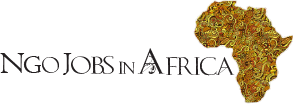This company has no active jobs
Who is Saartjie (Sarah) Baartman, and why have we named our women’s centre after her?
In 1810, when Saartjie Baartman was in her early twenties, she was persuaded by an English ship’s doctor, William Dunlop, to travel to England to make her fortune. However, as a Khoikhoi woman she was considered an anthropological freak in England, and she found herself put on exhibition, displayed as a sexual curiosity. Dubbed The Hottentot Venus, her image swept through British popular culture. Abolitionists unsuccessfully fought a court battle to free her from her exhibitors.
Saartjie Baartman was taken to Paris in 1814 and continued to be exhibited as a freak. She became the object of scientific and medical research that formed the bedrock of European ideas about black female sexuality. When she died in 1816, the Musee de l’Homme in Paris took a deathcast of her body, removed her skeleton and pickled her brain and genitals in jars. These were displayed in the museum until as late as 1985.
After five years of negotiating with the French authorities for the return of Saartjie Baartman’s remains, the South African government, together with the Griqua National Council which represents the country’s 200 000 Griqua people, part of the Koi-San group, brought Saartjie Baartman back to South Africa. On Friday 3 May 2002, in a moving ceremony attended by many representatives of the Khoikhoi people, Saartjie Baartman was welcomed back to Cape Town. Her final resting place is in the Eastern Cape, where she was born.
By naming our centre after Saartjie Baartman, we are remembering and honouring a woman who has become an icon, not only to her own Khoikhoi people, but to all women who know oppression and discrimination in their lives.
People sometimes ask us for pictures of Saartjie Baartman. We have decided not to provide these, out of respect for her and in order not to perpetuate her exploitation by putting her once again on display.
With regard to Saartjie Baartman’s name, we are aware that according to her baptism certificate (Saartjie was baptized in England), her name is written Sara Bartmann. In most writings, she is referred to as Sarah or Saartjie Baartman, where Saartjie is the Afrikaans diminutive of Sarah. There is a current debate on whether Saartjie should be discarded in favour of Sarah, as many women feel that the diminutive form of names is infantilizing. We use Saartjie and Sarah interchangeably, while acknowledging the Centre’s formally registered name as the Saartjie Baartman Centre.


